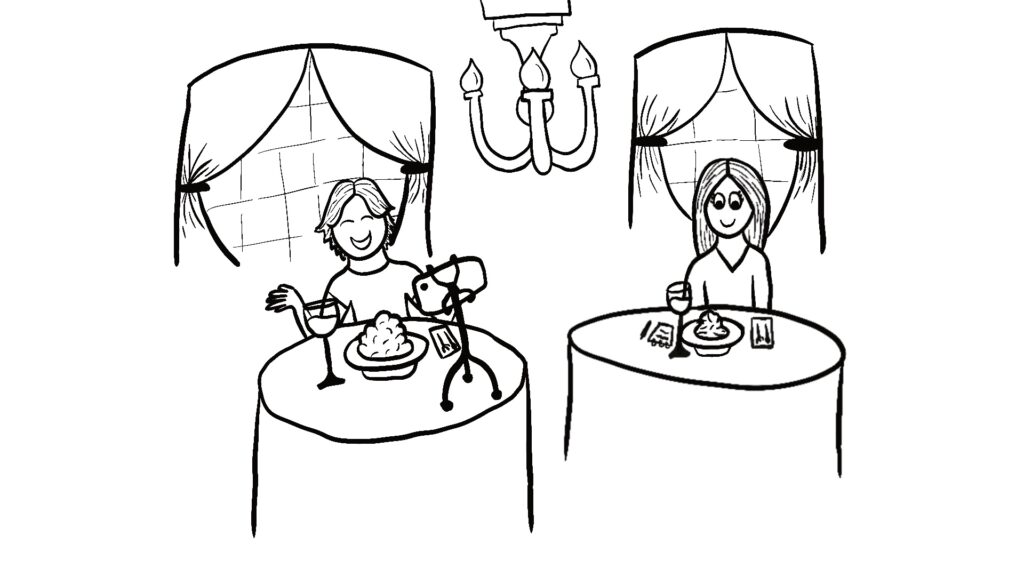Can traditional food journalism survive in a TikTok-driven world?

In an age where a thirty-second TikTok can make or break a restaurant, conventional food reporting could become a thing of the past. However, many still see the value and relevance of traditional food journalism.
Restaurateur Jenn Agg has been a part of Toronto’s restaurant scene since 2008, with beloved establishments like General Public, Grey Gardens, Le Swan French Diner, Bar Vendetta, Rhum Corner, and Cocktail Bar. She is known for her strong opinions on dining, including the importance of genuine culinary critique.
In August, on the podcast How Dare You with Allana Harkin, Agg put it bluntly: “When you are pouring yourself into something and nobody gives you 1,600 words on the art you made, did you make the art?” Agg says she is “devastated” at food journalism’s status in Canada and feels “dismissed” without the long-form reviews and criticism of the past.
The New York Times’s first food editor, Jane Nickerson, believed in exploring food’s social context. Her work transitioned from recipe-driven columns to stories examining relationships between people, ingredients, and culinary traditions. For Nickerson and the generations of food journalists who followed, food writing was as much about conversation as critique. It was a way to inform and inspire readers about what’s on their plates and why it matters.
Driven by Influencers
In Toronto, food coverage is primarily driven by influencers on Instagram and TikTok who focus on capturing glossy snapshots of dishes and listing prices, only to move on to the next trendy spot. “The downside of social media posts is that when a video is posted, it’s gone,” says Karon Liu, a Toronto Star food reporter and one of the few dedicated voices left in Toronto’s food journalism scene. Liu continues, saying that, occasionally, posts can seem “isolated and disconnected from the city” and don’t “add information beyond a Yelp review.”
Liu’s reporting isn’t centred on whether a dish deserves five stars but on situating each restaurant within Toronto’s broader culinary landscape. “Making people feel smarter about their city is my goal whenever I write,” he says. “It’s not just about whether food is good or not. It’s about where this restaurant stands in the culinary scene.”
“Restaurant critics have, in the past, come off as a little bit pretentious, focusing only on what might be deemed five-star establishments, as if they’re the only restaurants worth their time,” says Rebecca Fleming, food and drinks editor at Toronto Life. She works with a team to bring in experienced writers who dive deep into the personalities, histories, and issues behind Toronto’s restaurant scene—work that goes beyond viral “yum” reactions on TikTok.
“Social media has democratized food journalism,” Liu says, noting that influencers can make restaurants in the GTA visible in ways traditional outlets can’t. Influencers can bring a sense of accessibility to food coverage, broadening the city’s culinary conversation to include a variety of voices and experiences, often spotlighting family-owned spots reflecting Toronto’s cultural diversity.
Look no further than Keith Lee’s stint in Toronto. He drove hordes of new customers to locally beloved mom-and-pop shops all across the city after giving his “live,” unedited, play-by-play reviews from his car to his millions of TikTok followers.

Fleming says influencers sometimes balance out a history of elitism in food journalism. The question is whether there is room for both. For Fleming, the answer lies in collaboration. “If influencers take care of a lot of the fluffy stuff, then that gives food writers more time to focus on harder-hitting food journalism.”
For today’s journalists, the hope is that the future of food journalism can celebrate the best of both worlds—respecting the art of food and amplifying the stories behind it, even in a world obsessed with scrolling to the next big thing.
About the author
Soraya El-houni
Soraya is a second-year Master of Journalism student at Toronto Metropolitan University. She has written for Toronto Life, SEASON Zine and Darby Magazine. She is interested in long-form writing, sports, culture, and social justice.






